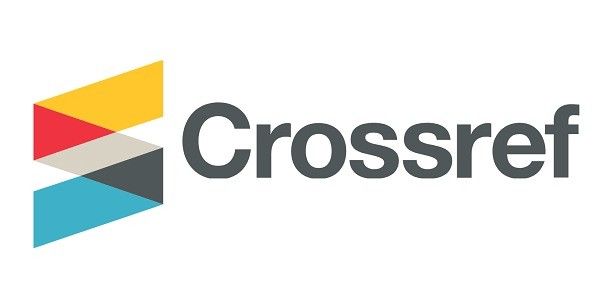Abstract
Adaptive reuse in architecture refers to the process of redesigning, converting, and reappropriating existing spaces for functions different from the ones they were originally designed for. This research is a case study showing an alternative to this concept, re-purposing aviation parts and finding new programmatic functions in the design learning studio. The pedagogy approach, adopted by a design studio in the United Arab Emirates (UAE), presents the fluidity of adaptive interiority against rigidity and site specificity. The research results in the creation of adaptive modular spaces and ephemeral interiority through upcycling design, flexibility, materiality, reusability, recyclability, and connectivity while simultaneously showcasing the rigorous interplay of innovation, research, science, and technology. The case study design studio was based at Zayed University and partnered with Etihad Airways, the national carrier of the UAE, highlighting the importance of industry and education as interdisciplinary collaborations. The paper looks at the pedagogical approach and examines the conducted process and evaluates the outcomes and shortcomings, including those inflicted by the COVID-19 world health pandemic. It argues for ‘adaptive interiority,’ inclusion in the adaptive reuse framework and a further reflection on the large vision and possible future impact within the UAE’s social and architectural context.
Publication Date
7-30-2022
References
About the university. (n.d.). Zayed University. Retrieved September 30, 2021, fromhttps://www.zu.ac.ae/main/en/explore_zu/index.aspx
Ahmad, L., Sosa, M., & Musfy, K. (2020). Interior design teaching methodology during the global COVID-19 pandemic. Interiority, 3(2), 163–184. https://doi.org/10.7454/in.v3i2.100
Alghoul, R., & Salman, N. (2019, April 1 4). Ministry of Culture launches project to promote architecture in UAE. http://wam.ae/en/details/1395302755198
Anthony, J. D. (1975). The impact of oil on political and socioeconomic change in the United Arab Emirates. In J. D. Anthony (Ed.), The Middle East: Oil, politics, and development (pp. 79–98). AEI Press.
Armstrong, P. J. (2009). Transforming the invisible hand: Redefining the machine-made house. In P. Clouston, R. K. Mann, & S. Schreiber (Eds.), Without a hitch: New directions in prefabricated architecture (pp. 212–220). Lulu Press.
Berthier, S. (2015). Timber in the buildings of Jean Prouvé: An industrial material. Construction History, 30(2), 87–106. http://www.jstor.org/stable/44215909
Bignon, J. C., Ferrier, J., & Zennaro, P. (2001). Jean Prouvé constructeur: 1901-1984. Réunion des Musées Nationaux.
Brooker, G., & Stone, S. (2018). Rereadings 2: Interior architecture and the design principles of remodelling existing buildings. RIBA Publishing.
Bullen, P. A. (2007). Adaptive reuse and sustainability of commercial buildings. Facilities, 25(1/2), 20–31. https://doi.org/10.1108/02632770710716911
Department of the Environment and Heritage. (2004). Adaptive reuse: Preserving our past, building our future. https://www.agriculture.gov.au/sites/default/files/documents/adaptive-reuse.pdf
Douglas, J. (2006). Building adaptation. Routledge.
Education and vision 2021. (2021). United Arab Emirates.https://www.vision2021.ae/en/publications
Faniran, O. O., & Caban, G. (1998). Minimizing waste on construction project sites. Engineering, Construction and Architectural Management, 5(2), 182–188. https://doi.org/10.1108/eb021073
Featured products. (n.d). MotoArt. Retrieved May 21, 2021, from https://www.motoart.com/
Ferguson, J. (1995). Managing and minimizing construction waste: A practical guide. Thomas Telford.
Gernal, M. L., Sergio, R. P., & Musleh, A. J. (2020). Market driven by sustainable construction and demolition waste in UAE. Utopía y Praxis Latinoamericana, 25(2), 56–65.https://dialnet.unirioja.es/servlet/articulo?codigo=7412966
Giebeler, G. (2012). Definitions. In G. Giebeler, R. Fisch, H. Krause, B. Lenz, F. Musso, & A. Rudolphi, (Eds.), Refurbishment manual: Maintenance, conversions, extensions (pp. 10–15). Birkhäuser.
Heringer, A. (2018). Anna Heringer Architecture. In S. Hofmeister (Ed.), My Bauhaus–Mein Bauhaus (pp. 26–27). DETAIL. https://doi.org/10.11129/9783955534523-008
Heringer, A., & Roswag, E. (2008). The school made of earth and bamboo, Rudrapur, Dinajpur District, Bangladesh, 2005. World Architecture.
Herrmann, M. (2021, February 22). Etihad airways' project is turning old aircraft parts into repurposed art. Forbes. https://www.forbes.com/sites/micheleherrmann/2021/02/22/etihad-airways-project-is-turning-old-aircraft-parts-into-repurposed-art/?sh=5467bfc3470a
Kappler, B. (2014, December 7). A study of modern architecture in Abu Dhabi, 1968-1992. NYUAD.https://nyuad.nyu.edu/en/news/latest-news/arts-and-culture/2014/december/a-study-of-modern-architecture-in-abu-dhabi-1968-1992.html
Katodrytis, G., & Mitchell, K. (Eds.). (2015). UAE and the Gulf: Architecture and urbanism now. Wiley.
Koch, A. (n.d.). Alan Koch Architecture. Retrieved September 30, 2021, fromhttps://alankocharchitecture.com/
Latham, D. (2016). Creative reuse of buildings: Volume one. Routledge.
Lest we forget: Emirati adornment: Tangible & intangible. (n.d.). warehouse421.https://www.warehouse421.ae/en/media/gallery/lest-we-forget_1/
Lim, J. C. (2007). Hand-made school, Rudrapur, Bangladesh. Aga Khan Award for Architecture.https://www.akdn.org/sites/akdn/files/media/documents/akaa_press_kits/2007_akaa/school_in_rudrapur_-_bangladesh.pdf
Machado, R. (1976). Old buildings as palimpsest: Toward a theory of remodelling. Progressive Architecture, 11, 46–49.
Markus, T. A. (Ed.). (1979). Building conversion and rehabilitation: Designing for change in building use. Butterworths.
Mitchell, M., & Tang, B. (2018). Loose fit city: The contribution of bottom-up architecture to urban design and planning. Routledge.
Modern heritage. (n.d.). Abu Dhabi Culture. Retrieved September 6, 2021, fromhttps://abudhabiculture.ae/culturall/en-article/modern-heritage/
Mohn, T. (2018, July 16). From the sky to your home, plane parts get a second life. The New York Times. https://www.nytimes.com/2018/07/16/business/airplane-parts-recycling-furniture.html
Pathak, S. (2012, April 14). Dubai aims to protect 220 historic buildings by 2016. Gulf News.https://gulfnews.com/entertainment/arts-culture/dubai-aims-to-protect-220-historic-buildings-by-2016-1.1008142
Paxton, J., & Fox, C. (1994). Crystal Palace. Phaidon Press.
Picton, O. J. (2010). Usage of the concept of culture and heritage in the United Arab Emirates–an analysis of Sharjah heritage area. Journal of Heritage Tourism, 5(1), 69–84.https://doi.org/10.1080/17438730903469813
Plevoets, B., & Van Cleempoel, K. (2011). Adaptive reuse as a strategy towards conservation of cultural heritage: a literature review. Structural studies, repairs and maintenance of heritage architecture XII, 118(12), 155–163. https://doi.org/10.2495/STR110131
Prakasa, L. R., Firmansyah, M., Al Hadi, P. F., & Hariyanto, K. (2021). The utilization of bamboo waste as a new alternative material in the aircraft fuselage interior panel structure. Vortex, 2(1), 30–38. https://doi.org/10.28989/vortex.v2i1.932
Price, C. (1984). Cedric Price (works). Architectural Association.
Schmidt III, R., & Austin, S. (2016). Adaptable architecture: Theory and practice. Routledge
Sosa, M., & Ahmad, L. (2021). Urban portraits: Preserving the memory of modern architectural heritage in the United Arab Emirates. In Urban modernity in the contemporary gulf: Obsolescence and opportunities. (pp. 246–261). Routledge. https://doi.org/10.4324/9781003156529
Su-Si house. (n.d.). Retrieved September 30, 2021, from http://www.jkarch.at/projekt/su-si
Sung, K. (2015). A review on upcycling: current body of literature, knowledge gaps and a way forward [Conference session]. The 17th International Conference on Environmental, Cultural, Economic and Social Sustainability (ICECESS), Venice.https://irep.ntu.ac.uk/id/eprint/12706/1/219287_PubSub1825_Sung.pdf
Swain, S. (2021, May 16). Construction wastes management in the UAE. EcoMENA.https://www.ecomena.org/construction-waste-uae/
Tangible & intangible heritage. (n.d.). Department of Culture and Tourism. Retrieved September 6, 2021, fromhttps://tcaabudhabi.ae/en/what.we.do/culture/tangible.intangible.heritage.aspx%20Accessed%206%20September%202021
The science, technology and innovation policy. (2021, October 12). United Arab Emirates.https://u.ae/en/about-the-uae/strategies-initiatives-and-awards/federal-governments-strategies-and-plans/the-science-technology-and-innovation-policy#:~:text=This%20policy%20aims%20to%20foster,vision%20for%20the%20year%202021
US Department of Transportation. (2016, September 23). Bureau of transportation statistics, Municipal solid waste and construction & demolition debris. Retrieved fromhttps://www.bts.gov/archive/subject_areas/freight_transportation/faf/faf4/debris
Yates, J. K. (2013). Sustainable methods for waste minimisation in construction. Construction Innovation, 13(3), 281–301. https://doi.org/10.1108/CI-Nov-2011-0054
Zhao, D., Guo, Z., & Xue, J. (2021). Research on scrap recycling of retired civil aircraft. IOP Conference Series: Earth and Environmental Science, 657 (1), 012062.https://doi.org/10.1088/1755-1315/657/1/012062
Zimmerman, J., & Forlizzi, J. (2014). Research through design in HCI. In J. S. Olson & W. A. Kellogg (Eds.), Ways of knowing in HCI (pp. 167–189). Springer. https://doi.org/10.1007/978-1-4939-0378-8_8
Submitted Date
2021-09-30
Accepted Date
2022-06-04
First Page
155
Last Page
178
Recommended Citation
Sosa, M., Ahmad, L., & Musfy, K. (2022). Adaptive Ephemeral Interiority: Upcycling Site Specific Interiors. Interiority, 5 (2), 155-178. https://doi.org/10.7454/in.v5i2.186
Creative Commons License

This work is licensed under a Creative Commons Attribution-NonCommercial 4.0 International License
Author(s) retain the copyright of articles published in this journal, with first publication rights granted to Interiority.






